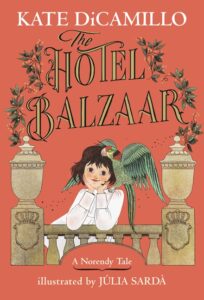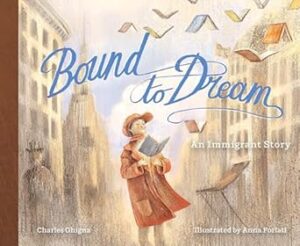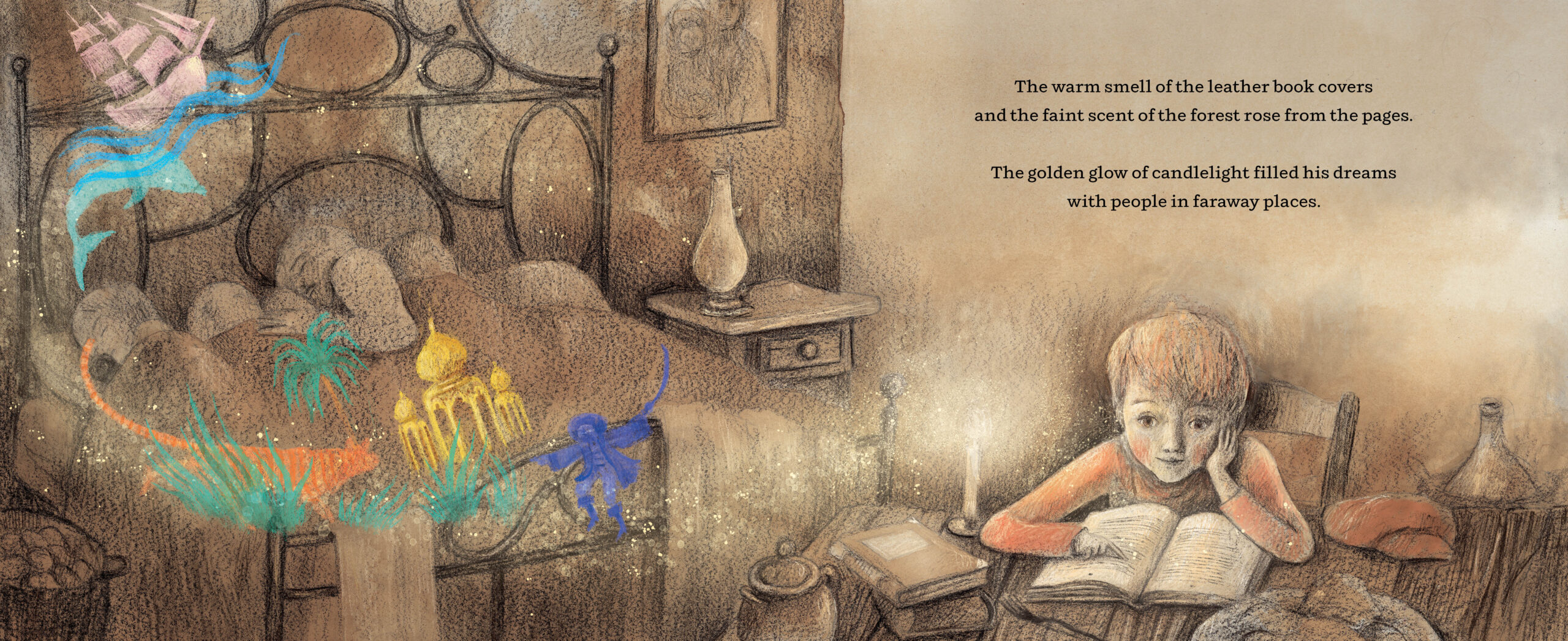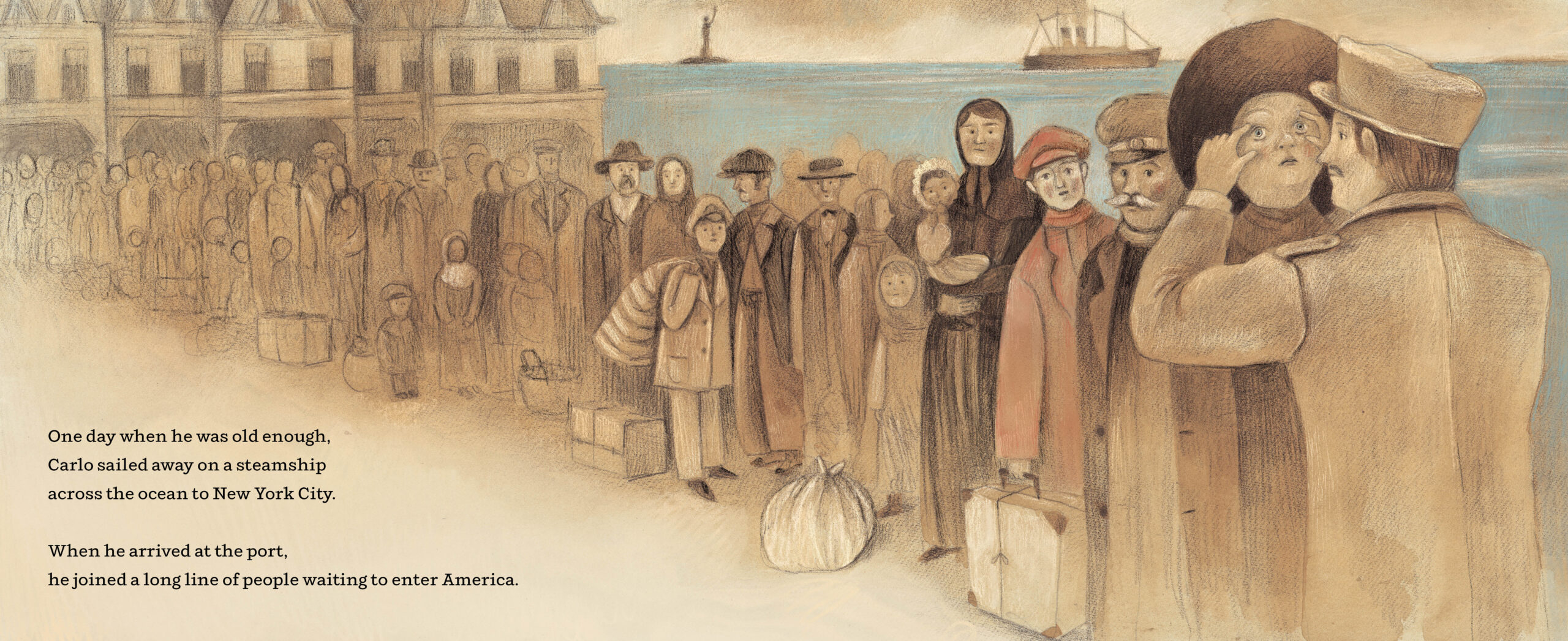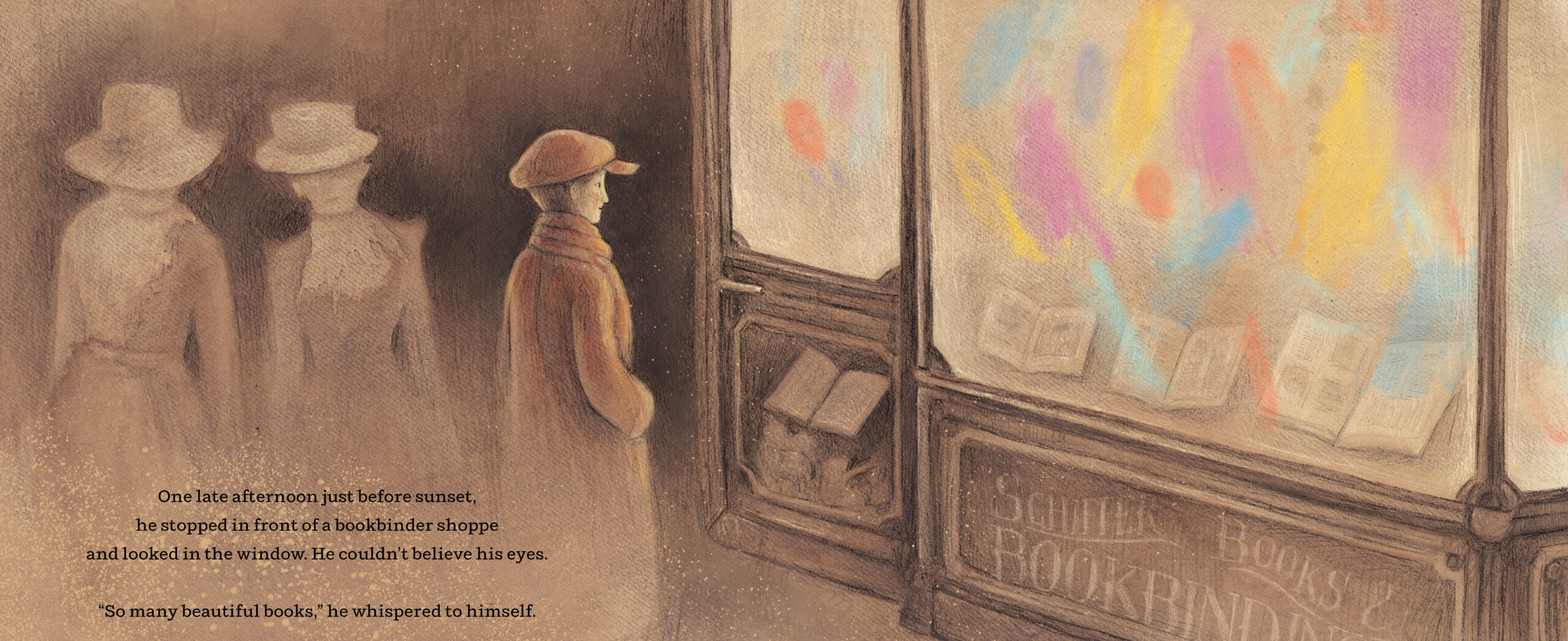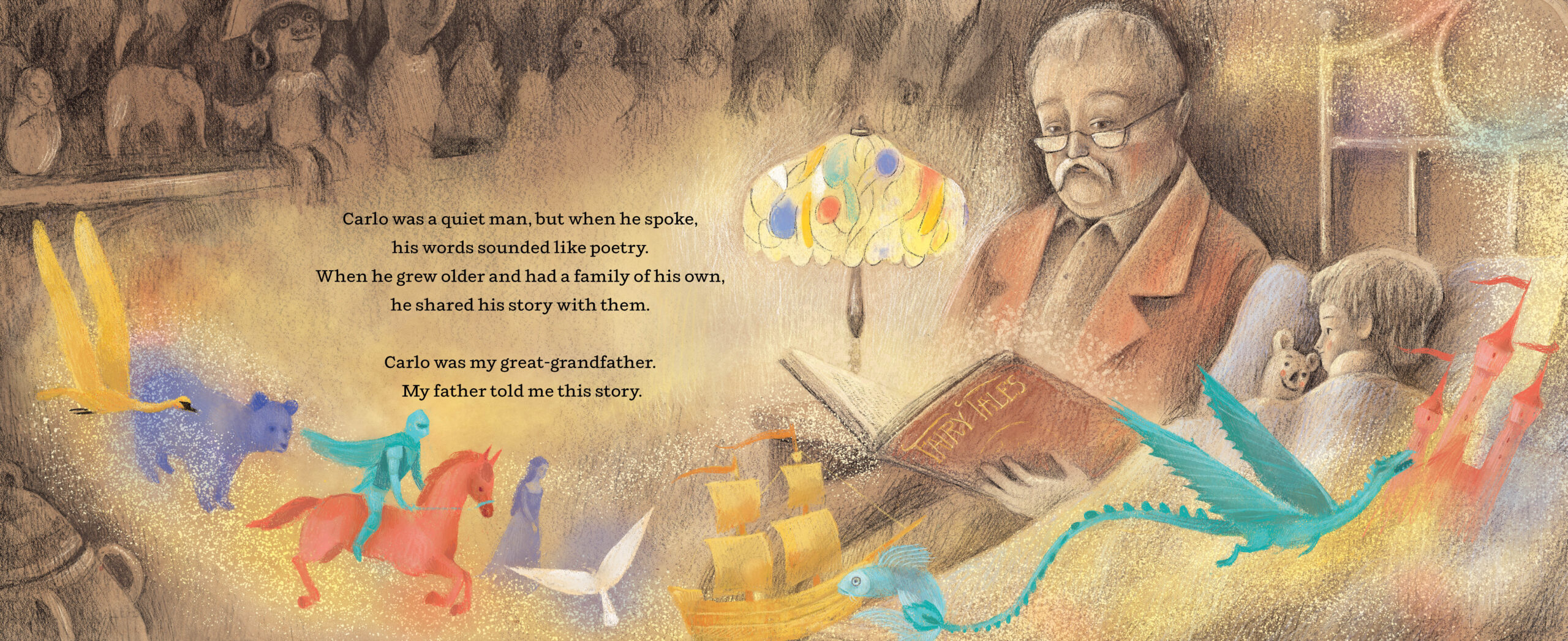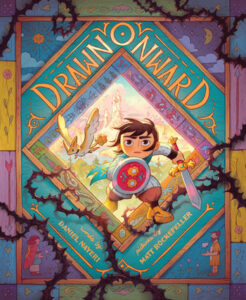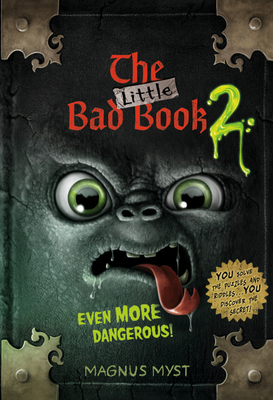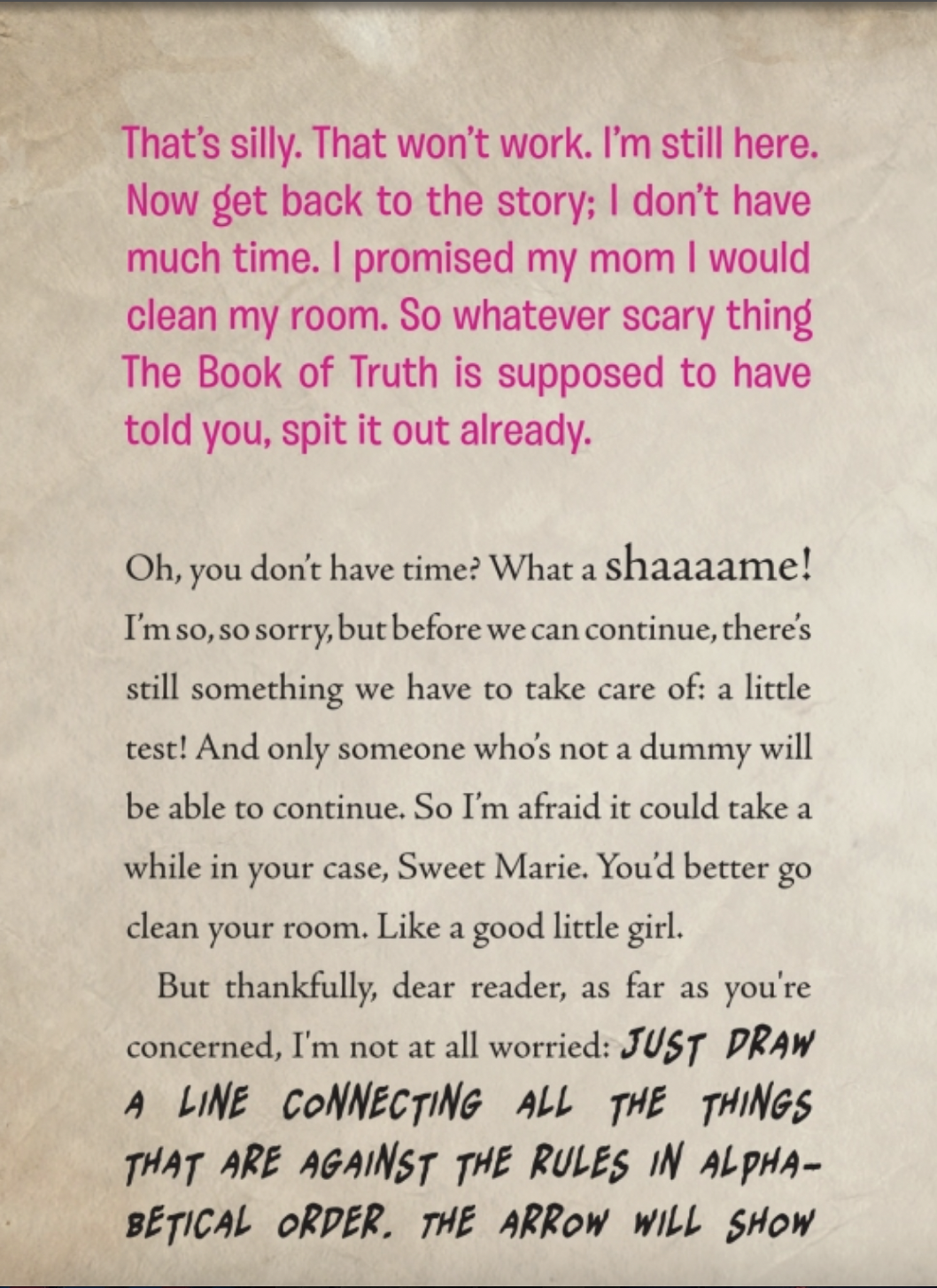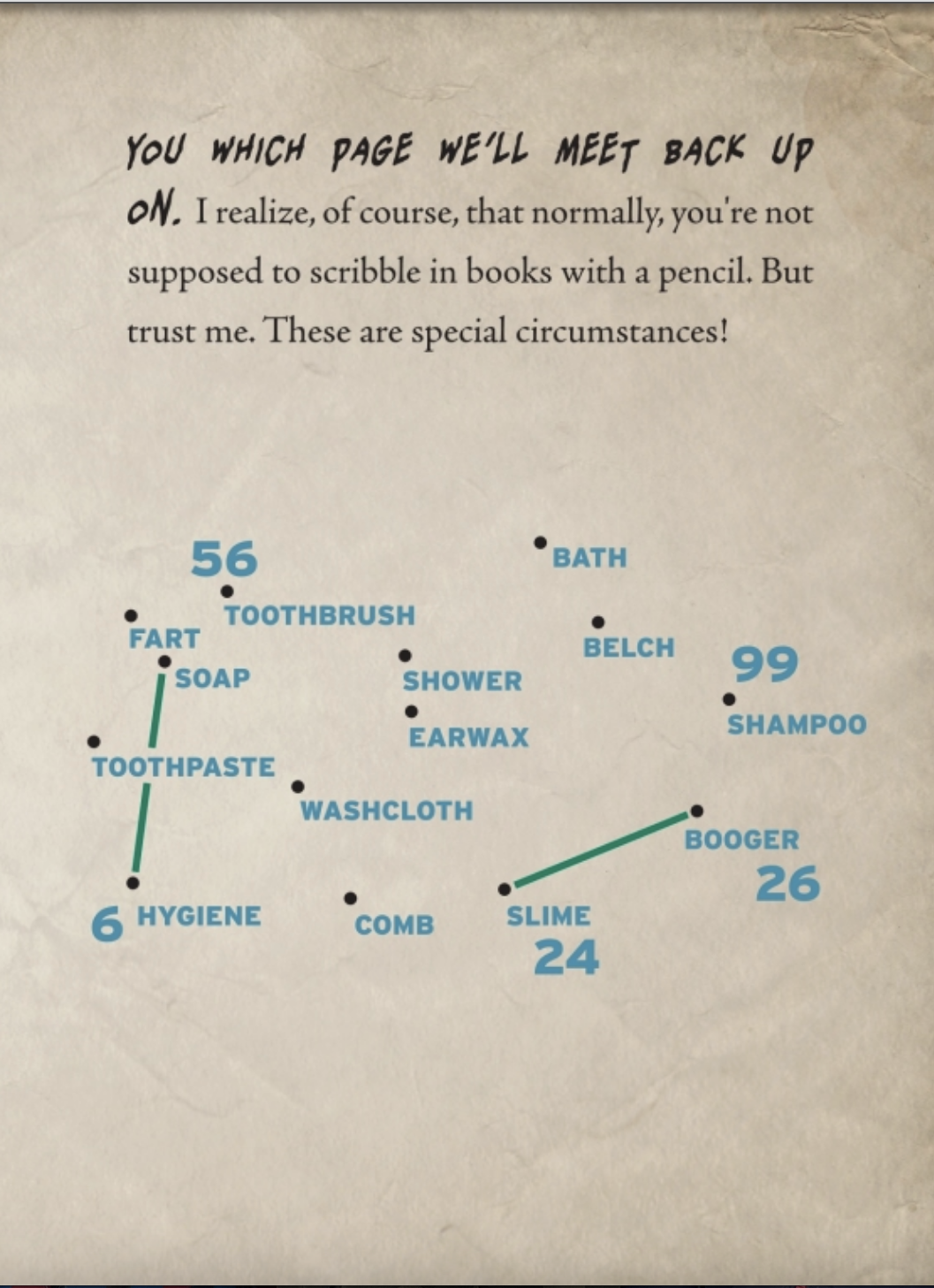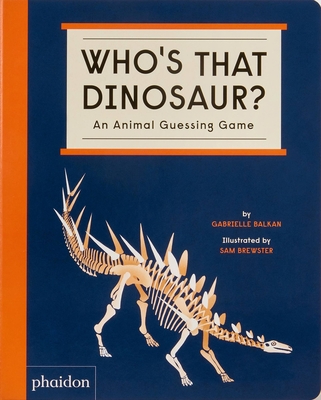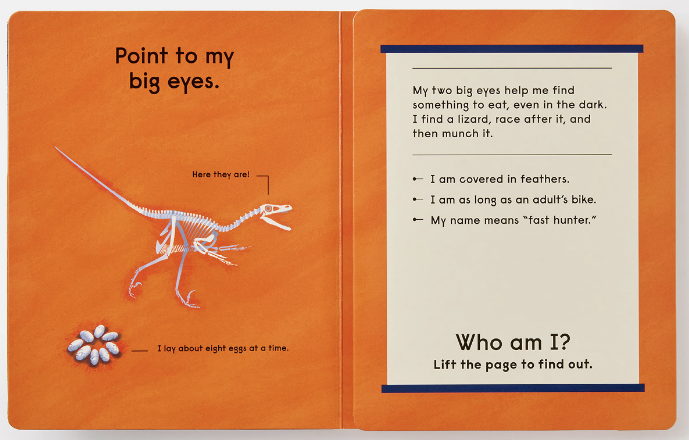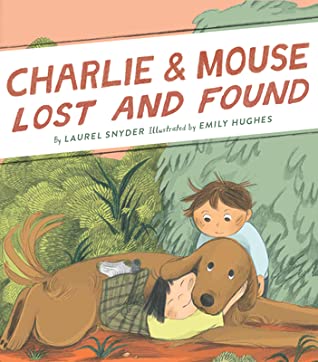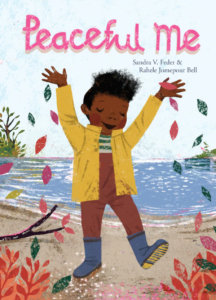
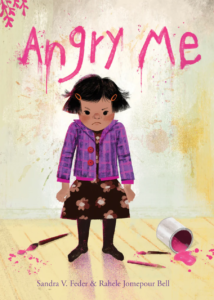
Peaceful Me & Angry Me
Author: Sandra V. Feder
Illustrator: Rahele Jomepour Bell
Published May 2nd, 2023 & May 1st, 2022 by Groundwood Books
Peaceful Me Summary: A young child tells us about the different times when he feels peaceful, as well as how he copes when he needs to find a peaceful state again.
Acclaimed picture-book creators Sandra V. Feder and Rahele Jomepour Bell have teamed up once again to create a thoughtful and beautifully illustrated exploration of peacefulness.
“I like feeling peaceful,” the young narrator tells us, then describes the times when he is filled with this emotion. When he is playing with a friend, he feels “free peaceful”; when he is having family dinner, “yummy peaceful”; when he is outside gazing up at the sky, “fluffy clouds peaceful”. But, of course, he doesn’t always feel peaceful, and we hear about his strategies for coping during those times, such as taking deep breaths, imagining his favorite things, and finding a quiet refuge or a hug.
Peaceful Me is the perfect companion to Angry Me — together, they encourage readers to let anger come and go, while inviting peace to come and stay.
Angry Me Summary: A young child tells us what makes her angry and how she tries to let the anger come and go. An artful starting point for conversations about strong feelings.
“I get angry,” says a little girl, looking fiercely in the mirror. Sometimes she gets angry when someone is mean and tries to take her toy away, when it feels unfair that there’s not enough time to go swimming, when she’s tired and just wants to go home, or when the kids at school leave her out, hurting her feelings.
When she’s angry, she tries to remember to use her words — even though that doesn’t always work. Sometimes she can’t find the right words, or the words don’t come out the way she intends. But sometimes words do help, and when her anger melts away a new feeling can blossom.
Sandra Feder’s cleverly constructed text presents different situations in which a child might feel angry, creating a nuanced look at anger and its many underlying emotions. Rahele Jomepour Bell’s illustrations show a loveable, angry little girl, brimming with personality, who learns how to express herself as she moves through her feelings.
Praise for Angry Me:
“A valuable tool for teaching children the important skill of recognizing and naming feelings.” —Kirkus Reviews
“A fresh addition to teeming ‘anger management’ shelves.” —Booklist
“Artfully captures the nuances of anger. STARRED REVIEW” —Shelf Awareness
“An effective springboard for discussing a topic that may be hard for young children to verbalize.” —School Library Connection
About the Creators:
SANDRA V. FEDER is the author of three acclaimed picture books: Angry Me, illustrated by Rahele Jomepour Bell; Bitter and Sweet, illustrated by Kyrsten Brooker, a PJ Library selection; and The Moon Inside, illustrated by Aimée Sicuro, which has been translated into multiple languages. She has also written the Daisy series of early chapter books, illustrated by Susan Mitchell. Sandra lives in California.
RAHELE JOMEPOUR BELL’s charming illustrations have appeared in Angry Me by Sandra V. Feder, The Treasure Box by Dave J. Keane and Our Favorite Day of the Year by A. E. Ali (Kirkus Best Picture Books of the Year), among others. She has also published seven picture books in Iran and has received a number of awards and honors for her work.
Review: These are such important books! Children become better adults when they can learn to name and deal with the actual feelings they are feeling, and these texts start this process. These books would be perfect to use at the beginning of the year to talk about emotional regulation and how conflicts will be resolved in the classroom. I also think that parents will benefit from these texts to discussion emotions, as will therapists and counselors. They are so multifaceted!
What made these books even more special were the way that the text does one purpose and then the illustrations add a whole other element to the book. I would love to see these books used not only with a social emotional learning purpose, but also use the illustrations to tie in narrative and creative writing elements. Students can take what they learn in the illustrations and write a whole other story!
Teachers’ Tools for Navigation (from the publisher):
- Key Text Features:
- explanation
- illustrations
- vignettes
- Correlates to the Common Core State Standards in English Language Arts:
- CCSS.ELA-LITERACY.RL.K.7 With prompting and support, describe the relationship between illustrations and the story in which they appear (e.g., what moment in a story an illustration depicts).
- CCSS.ELA-LITERACY.RL.1.2 Retell stories, including key details, and demonstrate understanding of their central message or lesson.
- CCSS.ELA-LITERACY.RL.1.4 Identify words and phrases in stories or poems that suggest feelings or appeal to the senses.
- CCSS.ELA-LITERACY.RL.1.7 Use illustrations and details in a story to describe its characters, setting, or events.
Discussion Questions:
- When do you feel peaceful? Angry?
- What is your favorite time you feel peaceful?
- How do you deal with feeling angry? What can you do to turn from angry to peaceful?
- Is it better to talk about your feelings or hold them in?
- How does talking about your feelings help you process?
- How do the illustrations of Peaceful Me and Angry Me help you with understanding the book better? How do they support the message of the book(s)?
- What is the main theme of Peaceful Me? Angry Me?
Flagged Passages:
Peaceful Me
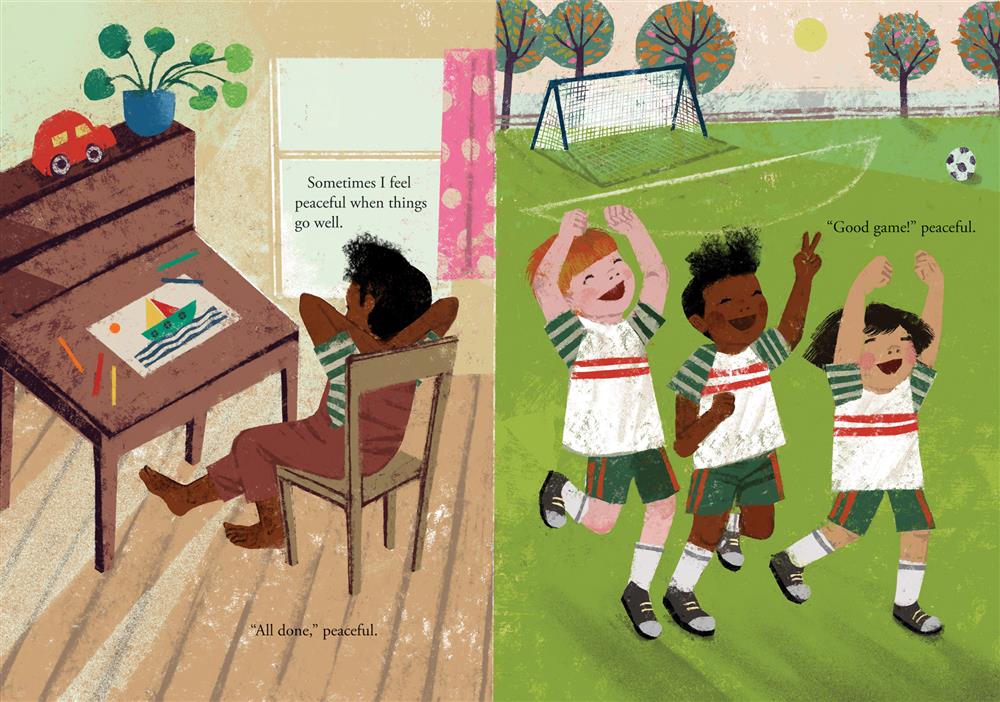
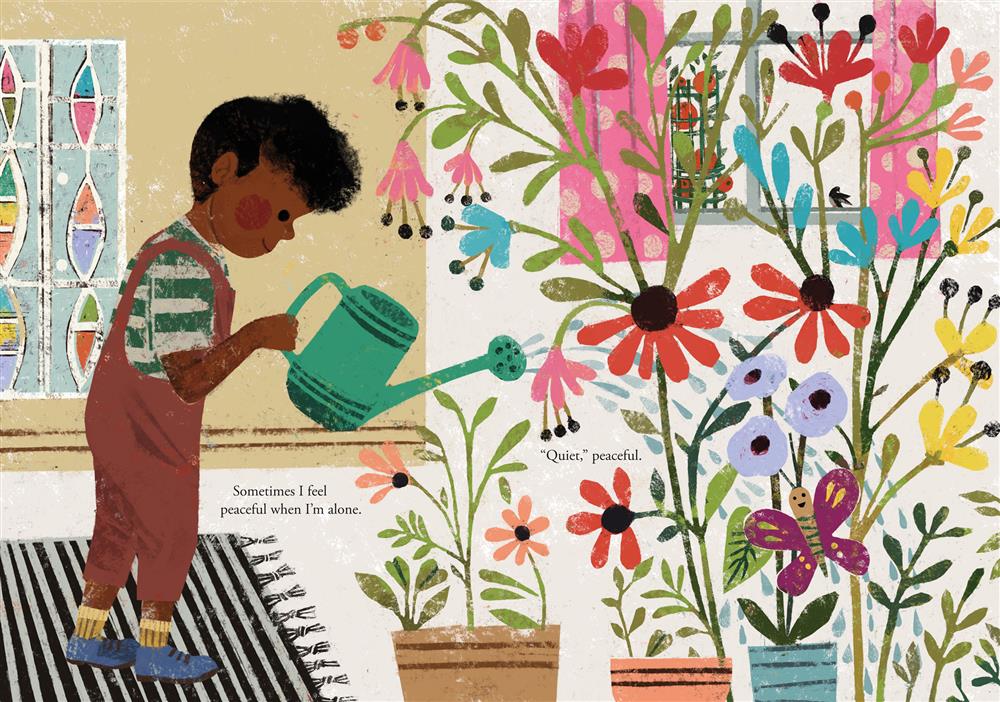
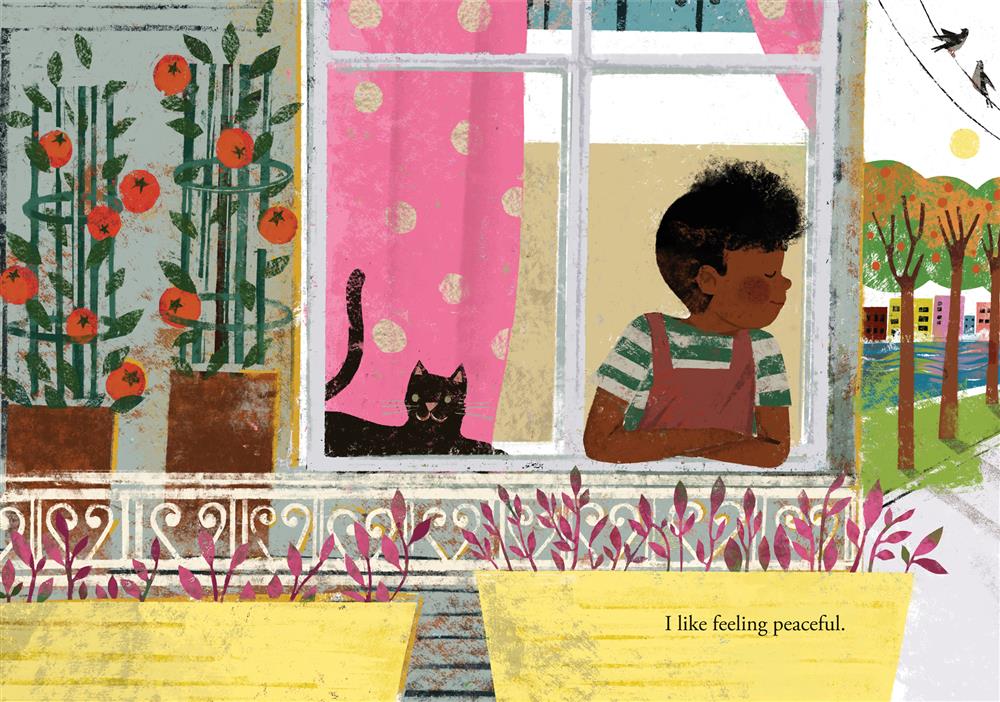
Angry Me
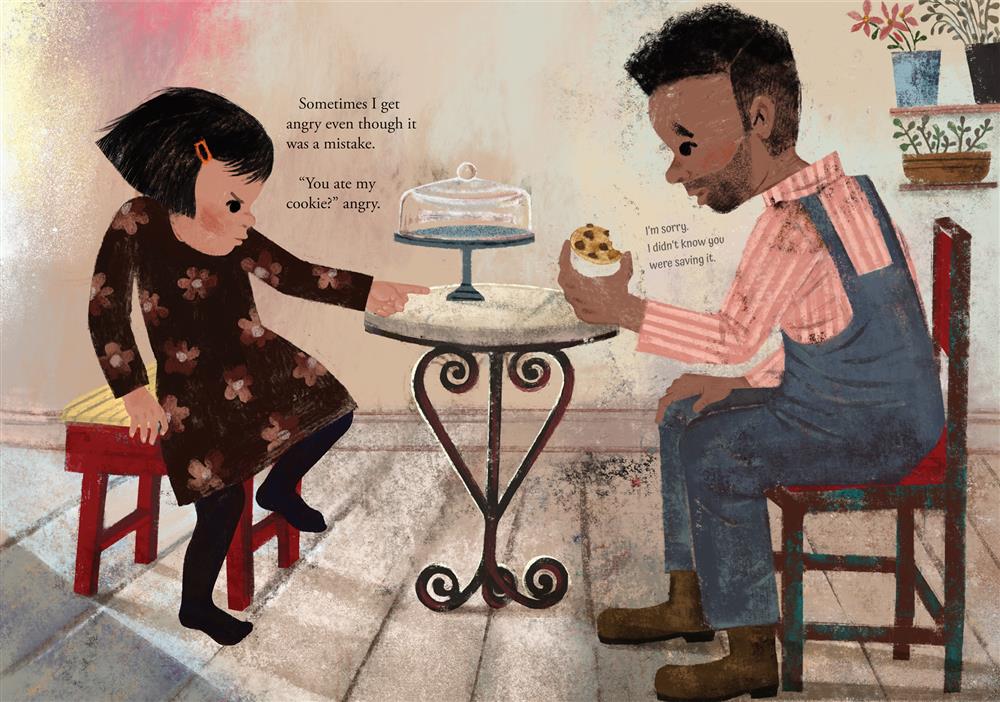
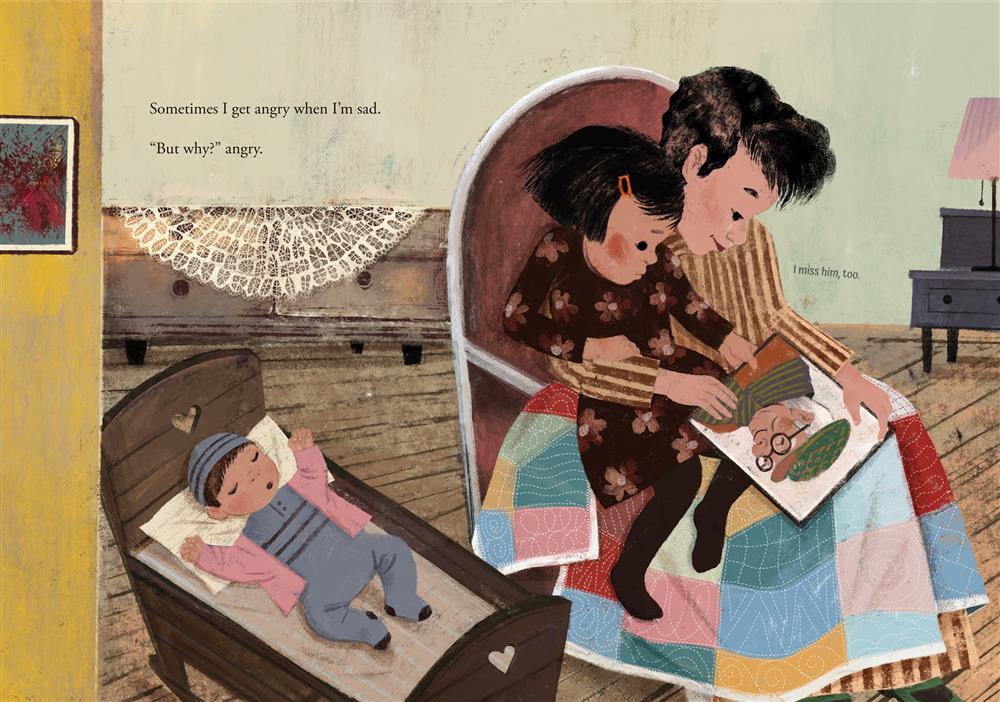
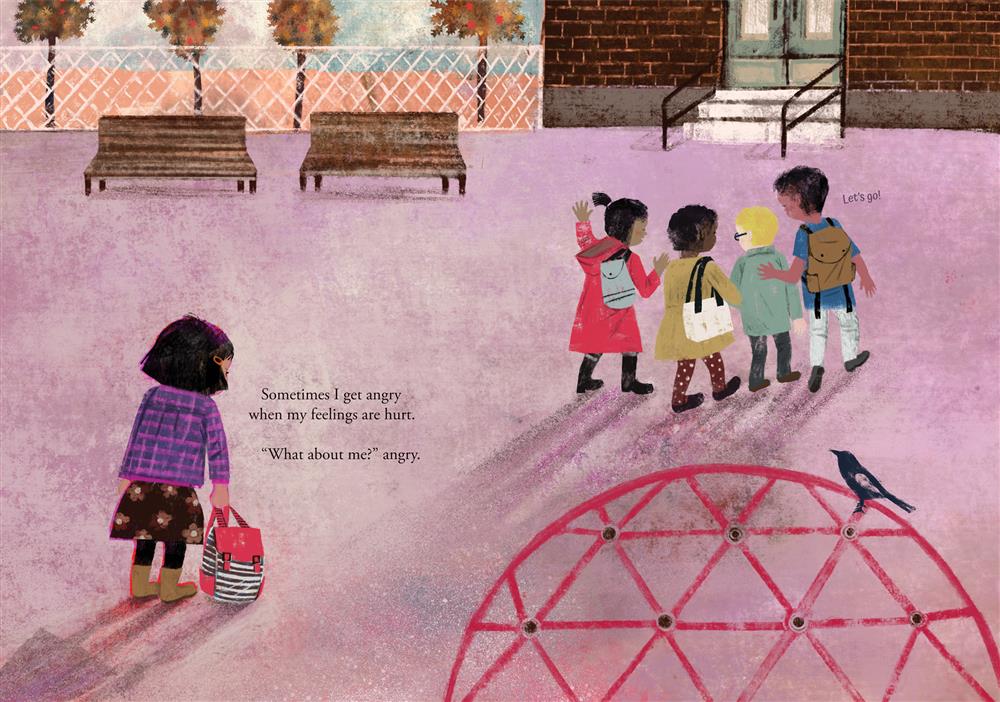
Read This If You Love: Jory John’s & Pete Oswald’s Food Group Books; Sunny and Oswaldo by Nicole Melleby, Illustrated by Alexandra Colombo; Invisible Things by Andy J. Pizza, Illustrated by Sophie Miller; I Don’t Care by Julie Fogliano & Molly Idle, Illustrated by Juana Martinez Neal; In the Blue by Erin Hourigan; Harold the Iceberg Melts Down by Lisa Wyzlic, Illustrated by Rebecca Syracus
Recommended For:




**Thank you to Nicole Banholzer PR for providing copies for review!**
